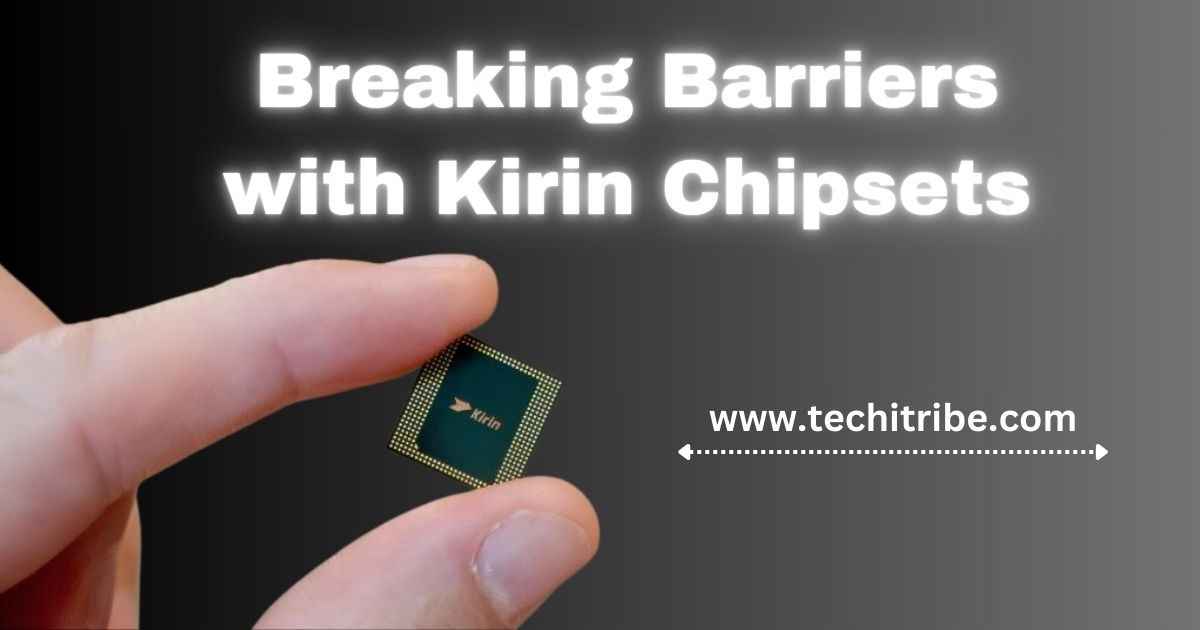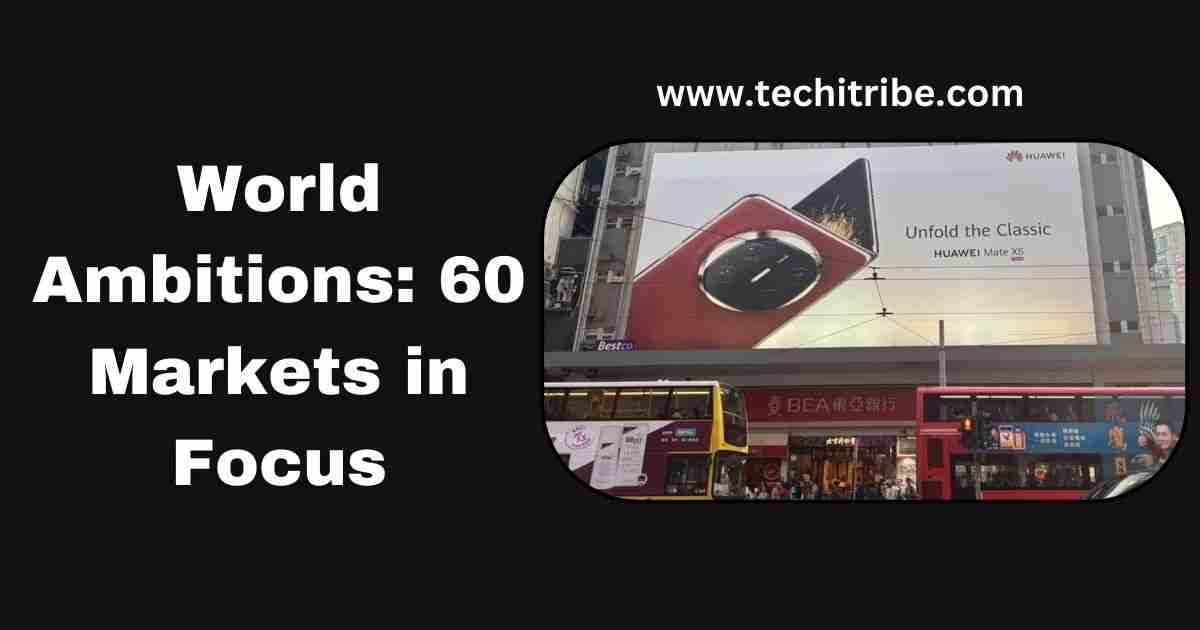Huawei Comeback, The spectacular resurgence of Huawei in the world smartphone market is not a comeback but a strategic revolution that may change the game’s dynamics. Innovation of its Kirin chipsets and the new HarmonyOS will be a quest to reclaim global leadership for the company. This is how Huawei plans to disrupt the game in the smartphone market.
Also visit this link: Galaxy S25 Ultra: All to Know About This Preorder Launch Day of Galaxy S Series

Breaking Barriers with Kirin Chipsets
Kirin 9000S: The Turning Point for Huawei, Huawei Comeback
Huawei Comeback, Huawei’s watershed moment for the Kirin 9000S chipset launched on it was the Mate 60 series. The U.S. trade sanctions were circumvented, putting Huawei back on its wireless feet in a highly competitive market, the world’s largest smartphone market. This paves the way for a greater international push.
More than another Huawei chipset, this Kirin 9000S symbolizes a kind of determination and resourcefulness. Being out of TSMC’s better fabbing, it is, in itself, impressive that Huawei works with SMIC in this matter.
The Kirin 9000S chipset is better in performance; this allows the users to multitask more efficiently without energy usage. Therefore, Huawei flagships will always be at their best despite technological constraints on them. Huawei optimizes the available resources for it to set a firm foundation for future development.
Road to Global Expansion
Huawei Comeback, Huawei will develop the Kirin 9020 chipset based on Kirin 9000S success. The chipset will be made on a 7nm process, and despite lagging behind competitors such as Apple’s A series and Qualcomm’s Snapdragon 8 Elite when it comes to these matters, Huawei is confident it will close the gap by software optimization and system integration.
The Kirin 9020 chipset will head the improvement towards incremental performance and efficiency, addressing key consumer demand for better benchmarking. HarmonyOS integration is going to be the focus, making it as seamless as possible to unlock all the potential within its hardware to keep the devices competitive in this fast-changing market.
HarmonyOS: A Game-Changing Ecosystem
Breaking Free from Android
Huawei Comeback, Perhaps the greatest obstacle Huawei had faced in the past was its inability to deliver an almost full-featured Android experience due to restrictions from the U.S. market. That has really frightened away most of its international customers, who relied a lot on Google services. Huawei has turned such a challenge around by coming out with a house operating system: HarmonyOS.
HarmonyOS is not just an alternative to Android; it is a fully-fledged ecosystem working peacefully on all devices. Its app store and increasingly diverse applications have called Huawei to build really competitive alternatives for both developers and users.
The user experience on the HarmonyOS has been harmonized on smartphones, tablets, wearables, and other IoT devices. This is convenient to the users while putting Huawei in the leading market of connected devices.
Lag-Free User Experience
Huawei Comeback, Huawei is perfecting the HarmonyOS, so it comes out silky smooth and without as much lag. The company’s OS optimization work means it comes less resource-consumptive in comparison to previous generations and could potentially perform almost on the levels of the finest flagships boasting best-in-class hardware. That guarantees that with these efficiencies, it does not expose its bottlenecks to getting to a product that the users should get on a premium device.
Huawei is investing in very advanced AI capabilities, making the customers satisfied with individualized interaction and smart task management. That adds more uniqueness to HarmonyOS from other competitors as well, and Huawei gets a competitive advantage amongst its customers from across the globe.

World Ambitions: 60 Markets in Focus
International Expansions
Huawei Comeback, Huawei does not stop there in China. The company has already set its targets for expansion in 60 international markets. These international markets are to be set in the Middle East, Southeast Asia, and Europe. Huge promotions for the latest Huawei devices, like the foldable Mate X6, have already taken place in cities like Dubai, Kuala Lumpur, and Hong Kong.
All these help enable global expansion through focused marketing campaigns and strategic partnerships. With distributors and retailers at the local level, Huawei ensures that the product reaches various types of customers. Other strengths are a competitive price compared to others, and flexible financing options are also set up in place, reaching more consumers around the world.
A threat to competitors
Huawei Comeback, This aggressive expansionist strategy is causing shock waves across the industry. Biggies like Apple, Samsung, and other Android manufacturers all watch in turn what Huawei is doing. Proprietary chipsets combined with an independent software ecosystem make Huawei a tough competitor.
The main focus on innovation and quality has been the reason why Huawei has won a loyal customer base despite numerous challenges. In fact, to outstrip the demand of its customers, Huawei sets itself in a different position, where it positions itself as a disruptor in the global smartphone market.
Challenges in the Future
Overcoming Technological Barriers
Huawei Comeback, The company has several challenges despite the development. Huawei has depended on SMIC for the chipset manufacture. The company is hence tied to 7nm foundry technology as offered by SMIC, at a time industry leaders boast of 4nm and 3nm. That might indicate that Huawei is unlikely to gain any market shares against industry leaders in high-performance markets.
The corporation is, however, looking for ways to climb over the wall. In relation to this issue, Huawei takes part in investing in R&D and joins some emerging companies specializing in tech to increase the scale of their innovation. This, therefore, places Huawei on an equal level of playing in the long run even as it innovates.
Trade Sanctions
Huawei Comeback, While Huawei can find some liberty with inhouse chips and Harmony OS from further overseas technology dependence, it is where the company stays without an exit from US sanctions on trade in that the actual implementation of global expansion could be hindered by the reduced access to essential components or technologies this employs.
For these, Huawei is increasing its suppliers’ pool as well as looking for an alternative market. From this, Huawei will be able to achieve survival in the market by diversifying dependence on some regions, developing international partnerships, and positioning itself better.
Surviving with Innovation in Time of Adversity
Innovating Over Weakness Into Strengths
Huawei Comeback, This journey for Huawei also testifies to its ability to innovate under pressure. The company’s focus on optimization in software and ecosystem development helps it break through hardware constraints. Efficiency in HarmonyOS, for instance, is a shining example of how Huawei has pushed the limits of performance with its 7nm chipsets.
Apart from software, Huawei has artificial and machine learning to improve performance and enhance the user experience for a device. It can make anything so advanced that it would inevitably promote its product.
Building Consumer Trust
Huawei Comeback, Apart from that, Huawei is investing in building consumer trust. The company is showing off the technological capabilities and devotion to quality to justify skepticism among consumers who are rather hesitant to opt for a non-Android device.
Huawei is reinforcing its reputation as a brand that has good reliability and innovation power through open communication with the customer and consumer-focused activities. The basis for winning new markets and further extending its global footprint is this.

What is in store for Huawei?
Expanding the offerings of devices
Huawei Comeback, Apart from the smartphone, Huawei can further expand its HarmonyOS range of products. Tablets, smartwatches, and even the Internet of Things are potential diversification options, and this will help the brand have a little more leverage in the world market.
Huawei is designing an effortless experience that is more convenient, easy to use, and productive as a holistic environment that integrates perfectly across different categories of hardware. This sets it apart from others and makes for customer retention.
Developer Enablement
Huawei Comeback, Huawei focuses much on developer support. In order to win the HarmonyOS battle, Huawei is trying to attract developers to their ecosystem by rewarding and empowering developers with abundant resources and a number of incentives and setting up a vast app ecosystem with Android and iOS.
Developer support is pretty crucial to sustaining long-term growth and ensuring high-quality applications are in place. Having a lively developer community, Huawei has got its future success in the right direction.
Closing the Technology Gaps
The biggest challenge facing Huawei would be to close the technology gap with competitors. How the company will make chipset technology superior could happen either through partnerships, internal R&D, or acquisition.
Being ahead of innovation and trends in its field, Huawei is perfectly positioned to spearhead the smartphone market around the world. This is where the company’s future will be set.
Conclusion
Huawei’s comeback story is nothing short of extraordinary. The company has survived trade sanctions and created its own software ecosystem. But there are still challenges ahead, as Huawei’s promises of global reach and ambition continue to drive the mobile phone industry into new territory. The company’s journey will, however, be one to watch as the company further evolves.
Huawei has shown a clear vision and strategic approach that would position the company to rewrite the rules of the competition and make a proprietary global leader in technology. But that road won’t be easy, and Huawei’s determination and ingenuity make it the only real contender for years to come.
